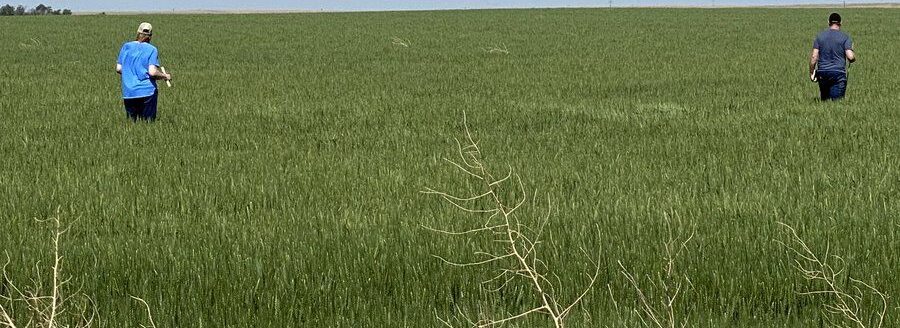Southern Plains dealt blow from drought
Wheat farmers in the Southern Plains know the drought has dealt a tough blow. Until rains fell last week, most areas of Kansas, Oklahoma and eastern Colorado had gone months without measurable precipitation. And while showers have helped, the region is far below normal precipitation.
Walsh, Colorado, farmer Brian Brooks estimates half of the winter wheat for Baca County is in poor condition. Only 10 percent is good and 40 percent is fair.
He grows about 2,200 acres, and holds hope his crop will be a decent one because of moisture Mother Nature left in 2017. The southeast Colorado county annually receives about 14 to 15 inches of rain, he said, and in 2017 he received 26 to 28 inches. His farm missed out on the weekend rain.
“Last year we had really good fall crops and deep down we still have good subsoil moisture,” he said.
The last measurable rain his farm received occurred last October, Brooks said. If in the next couple of weeks significant moisture falls it would be a difference maker for the wheat crop. “The more it (the drought) lingers the tougher it will make it.”
He knows producers who planted wheat early in the fall planting cycle and their wheat crop has already failed. His crop was planted later so he was holding out hope that Mother Nature will open the spigot again. For now, Brooks does not plan to apply additional fertilizer as a cost-saving measure. He does not plan to tear out the crop either.
“I’d hate to disturb the ground right now because of the blowing it would cause,” he said.
The severity of the Southern Plains drought was the focus of a recent webinar in which John Nielsen-Gammon, a regents professor at Texas A&M and the Texas state climatologist, said drought conditions were particularly acute in portions of Southwest Kansas, Southeastern Colorado, West Texas, Eastern New Mexico and Western Oklahoma.
“The status of the wheat crop is the worst it has been in a decade,” he said in a telephone interview.
Nielsen-Gammon looked at past wheat production records in the northern Texas Panhandle when the conditions were similar to what producers are seeing this year and the news is less likely to be good.
“You have about half the yield as a normal year,” Nielsen-Gammon said about his findings.
In some regions there are pockets of subsoil moisture, the climatologist said. In parts of Eastern New Mexico and West Texas, farmers experienced above-average rain in August 2017. In some parts of Western Oklahoma, farmers were not as fortunate as they missed out on the late summer rains, he said, although some rain fell over the weekend of March 18 and ranged from slightly measureable to an inch.
According to the Oklahoma Mesonet website report on March 8, the Panhandle was more than a half-inch below normal for their eighth driest February on record.
Nielsen-Gammon said the transition of dry months to wet months typically occurs in March. That should give farmers some hope.
“Normally rainfall chances increase during March to April, then from April to May and then May to June,” he said. “The outlook right now is there is no tracking to say it is below or above normal on moisture. That is neither good nor bad news.”
What is predicted for spring is the likelihood of above average temperatures, which can increase the pace of greening before the rain hits, he said. One good thing about trying to forecast moisture this time of year, regardless of the current situation, is that it does not have a strong influence on what can happen for the remainder of the year.
Dave Bergmeier can be reached at 620-227-1822 or [email protected].



